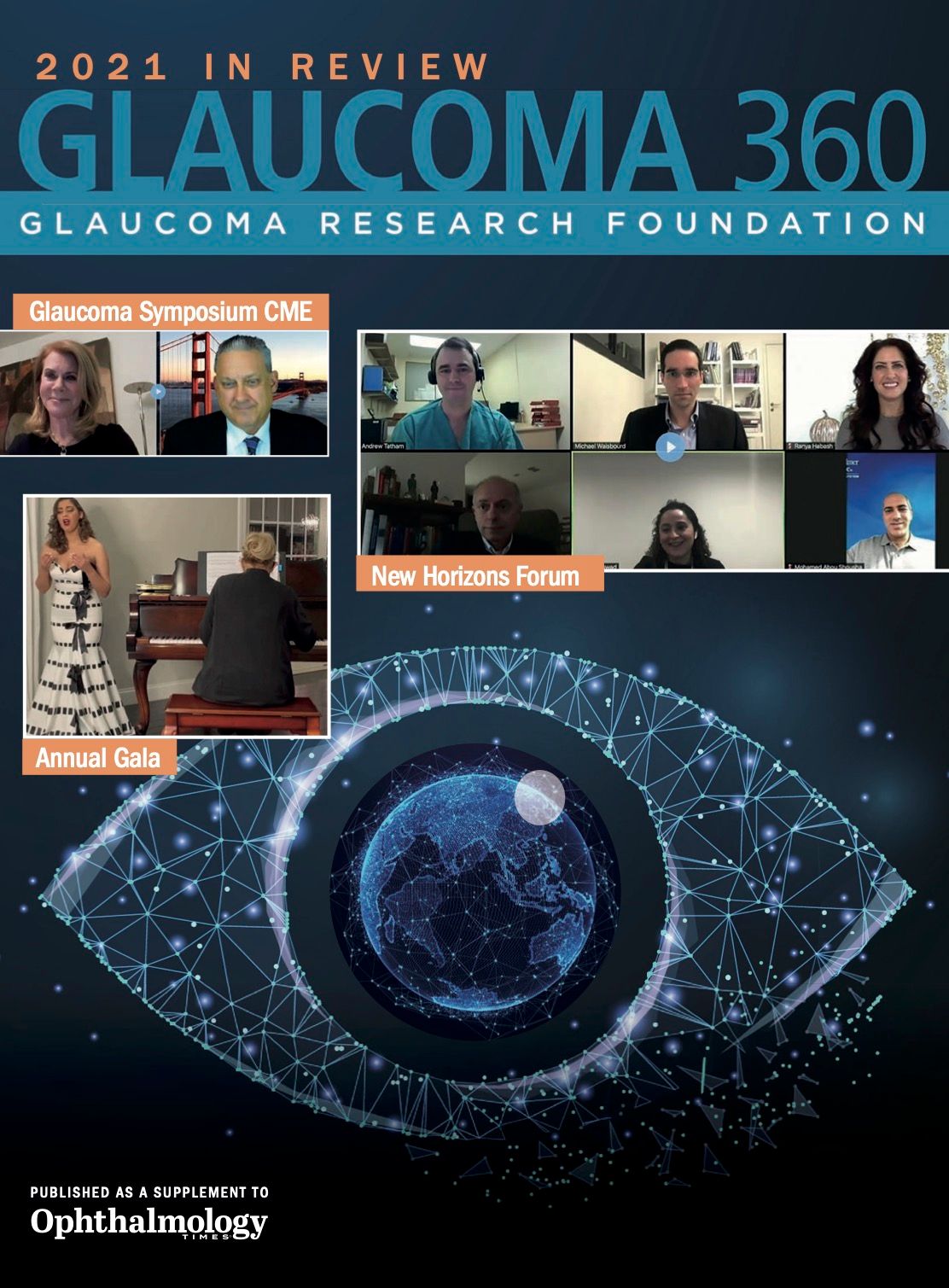Publication
Article
Supplements and Featured Publications
New Horizons Forum: Diagnostic advances in glaucoma
Author(s):
Investigators from various companies described their diagnostic offerings at the Glaucoma Research Foundation’s 2021 New Horizons Forum.
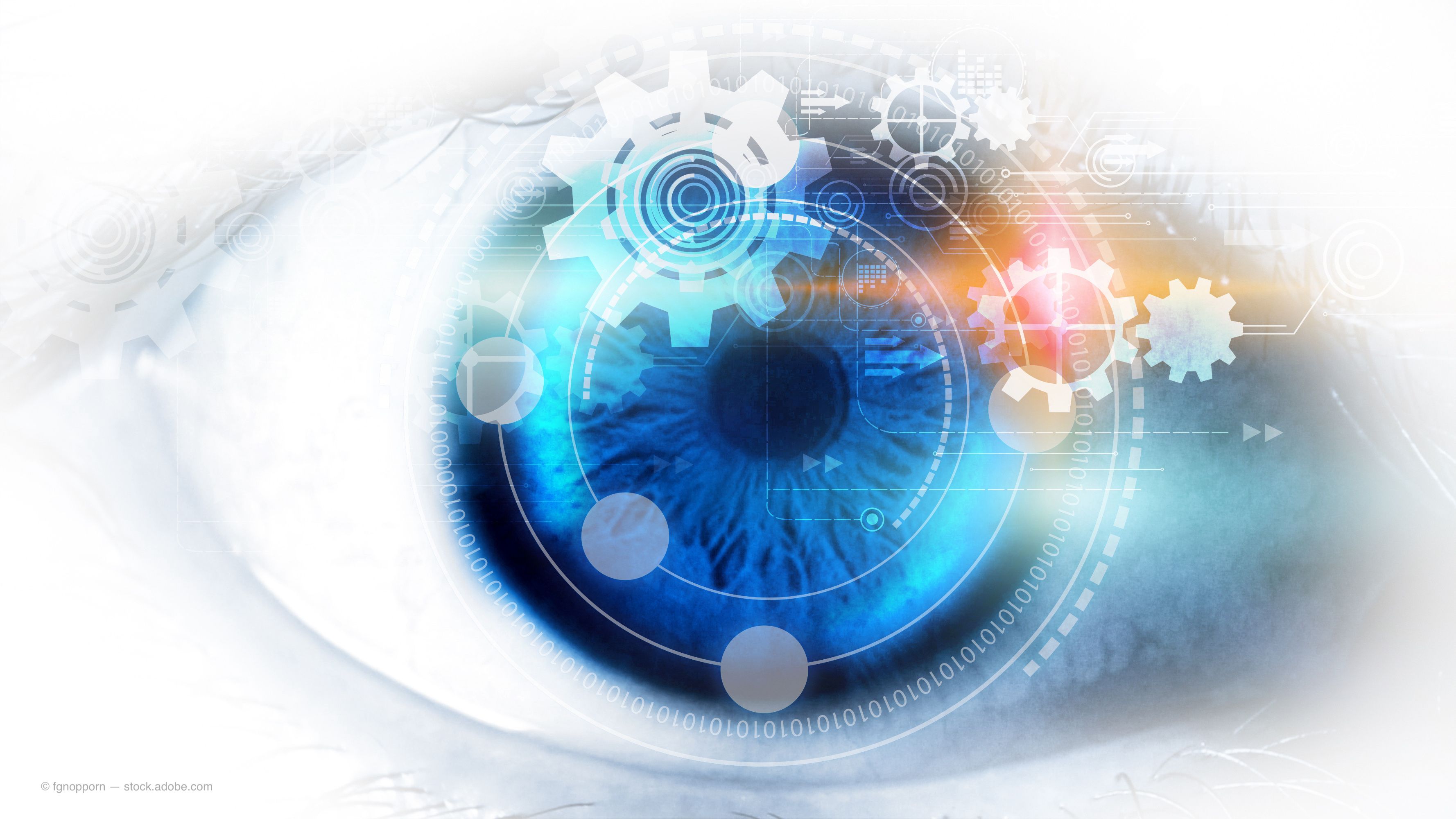
By Lynda Charters
Investigators from various companies described their diagnostic offerings at the Glaucoma Research Foundation’s 2021 New Horizons Forum.
The advances, mostly centered on artificial intelligence (AI), are highlighted here.
PERG: Useful for detecting very early glaucoma damage
Pattern electroretinography (PERG) is being elevated to the next level, that is, out of the laboratory setting and into the clinic as a useful technology that can detect early metabolic changes, said Matthew Emmer, vice president of business development and clinical affairs, Diopsys Inc.
“The goal was to make PERG easier to use and less demanding for the physician and technicians, with testing times shorter than 1 minute per eye,” he said.
The company has developed reference ranges and reports that are easily interpretable.
Trend graphs also have been developed, making PERG useful for objective, functional understanding of early disease dysfunction such as early retinal ganglion cell (RGC) dysfunction, Emmer explained.
Numerous studies have reported that PERG is very sensitive for detecting functional loss and provides a window of opportunity before apoptosis
occurs.
PERG can detect decreased RGC function years before structural loss in glaucoma suspects and is more sensitive than optical coherence tomography for detecting dysfunction in affected cells before damage is irreversible in ocular hypertension.
PERG also can predict visual field loss and disease progression and monitor treatment efficacy.
Diopsys first introduced ERG sensors that facilitated the development of a grading system for the average patient pattern responses to stimuli.
In the presence of early disease, the signal becomes less reproducible and markedly different from a normal sinusoidal response.
The grading system allows clinicians to assign a number to the degree of dysfunction detected by the sensors considering the response size, response speed, and reproducibility along with a reference range.
A trend plot shows changes over time.
“All of this information precedes structural changes,” Emmer explained.
Recent investigations are indicating a strong correlation between PERG and the RGC count and between the PERG retinal vessel count and retinal vascular integrity, he pointed out.
The company is releasing software that incorporates AI based on data from 800 patients; application of the data algorithm to a patient subset is showing better sensitivity and specificity.
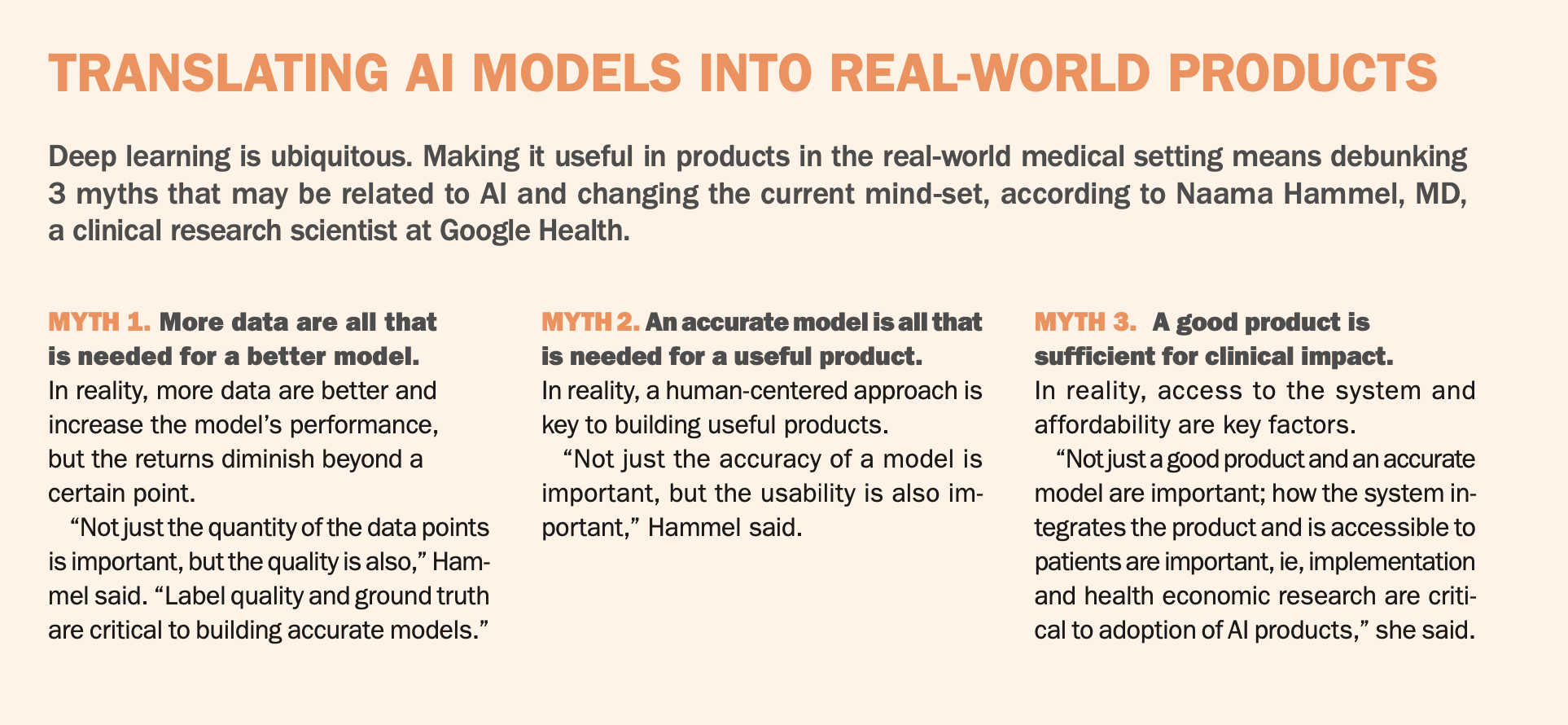
Using AI to prevent blindness
Kaushal Solanki, PhD, CEO and founder of Eyenuk Inc, is dedicated to detecting glaucoma early to prevent vision loss.
Eyenuk is marketing an AI platform that can screen, diagnose, and monitor diseases based on ophthalmic images. With imaging, AI can instantly
produce an actionable report without the need to dilate the majority of patients.
“A number of disease indications can be detected through this platform,” he emphasized.
Use of AI and automation are the only ways we can accomplish the goal of preventing vision loss, Solanki said.
The platform incorporates 3 components: EyeScreen, EyeArt, and EyeMark.
EyeScreen is a human plus AI diagnostic service with which human graders review images as usual with AI performing a background check and flagging potential errors.
EyeArt is autonomous AI that enables screening at the point of care without requiring a specialist.
EyeMark is “superpower” AI that performs an analysis to detect abnormalities and longitudinal monitoring that detects and quantifies changes to create biomarkers that human experts cannot produce, he explained.
Thus far, Eyenuk has launched the platform targeting diabetic retinopathy; EyeScreen and EyeArt are launched and EyeMark will launch in 2021.
He reported that EyeArt is the first FDA-cleared autonomous AI technology for detecting more than mild diabetic retinopathy and vision-threatening diabetic retinopathy.
Regarding glaucoma, EyeScreen and EyeArt are being marketed and EyeMark is under development.
“AI will play an instrumental role to enable timely detection and monitoring of glaucoma via EyeScreen, EyeArt, and EyeMark. Using this platform, we hope to significantly reduce vision loss from glaucoma,” Solanki concluded.
Using your smartphone camera, hover over the QR code to watch the full video.
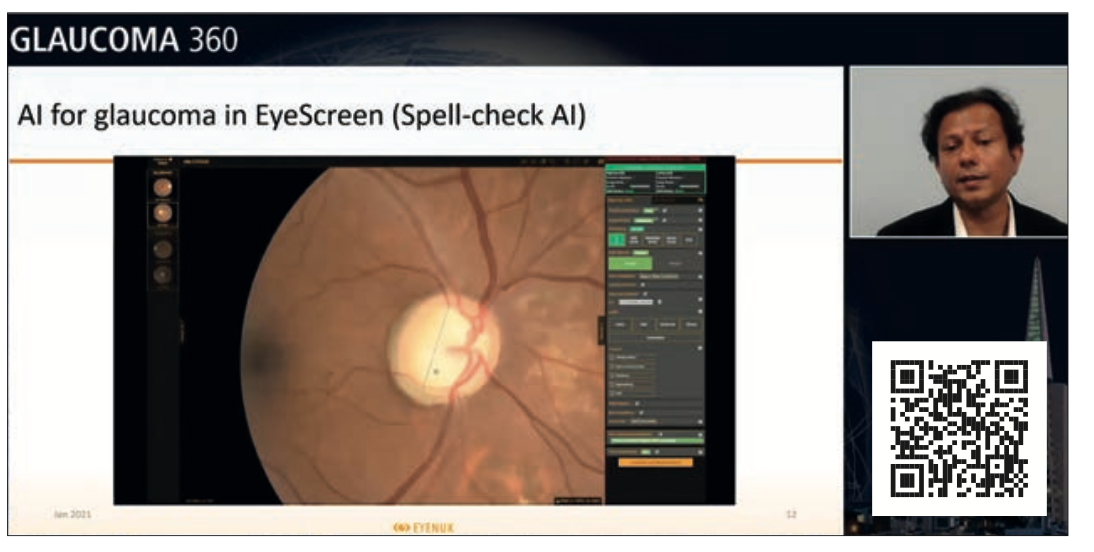
AI-driven platform for diagnostics and augmentation
Millions of patients worldwide have visual field (VF) defects and/or double vision from glaucoma, stroke, macular degeneration, diabetes, and retinitis pigmentosa. The current treatments do not restore vision and only provide visual aids.
Heru has developed a cloud-based AI platform combined with downloadable apps on augmented and virtual reality headsets to provide both autonomous vision diagnostics and personalized vision augmentation, according to Mohamed Abou Shousha, PhD, MD, MS, FRCS, CEO and founder, Heru, and associate professor, Bascom Palmer Eye Institute, Miami, Florida.
The company’s diagnostic suite includes the following downloadable apps: autonomous VF, autonomous strabismus, visual distortion, eye imaging, and remote eye examination.
The VF app, a registered medical device with the FDA, is self-administered, easy to use, portable, and cost-effective.
“One headset plus software performs multiple tests,” he said, explaining that the test uses patients’ natural interactions to light stimuli presented
in the glasses to allow the app to map and quantify the vision autonomously.
Telemedicine applications include VF, remote eye examination, and eye imaging capabilities; following testing, the results are sent to a portal for review.
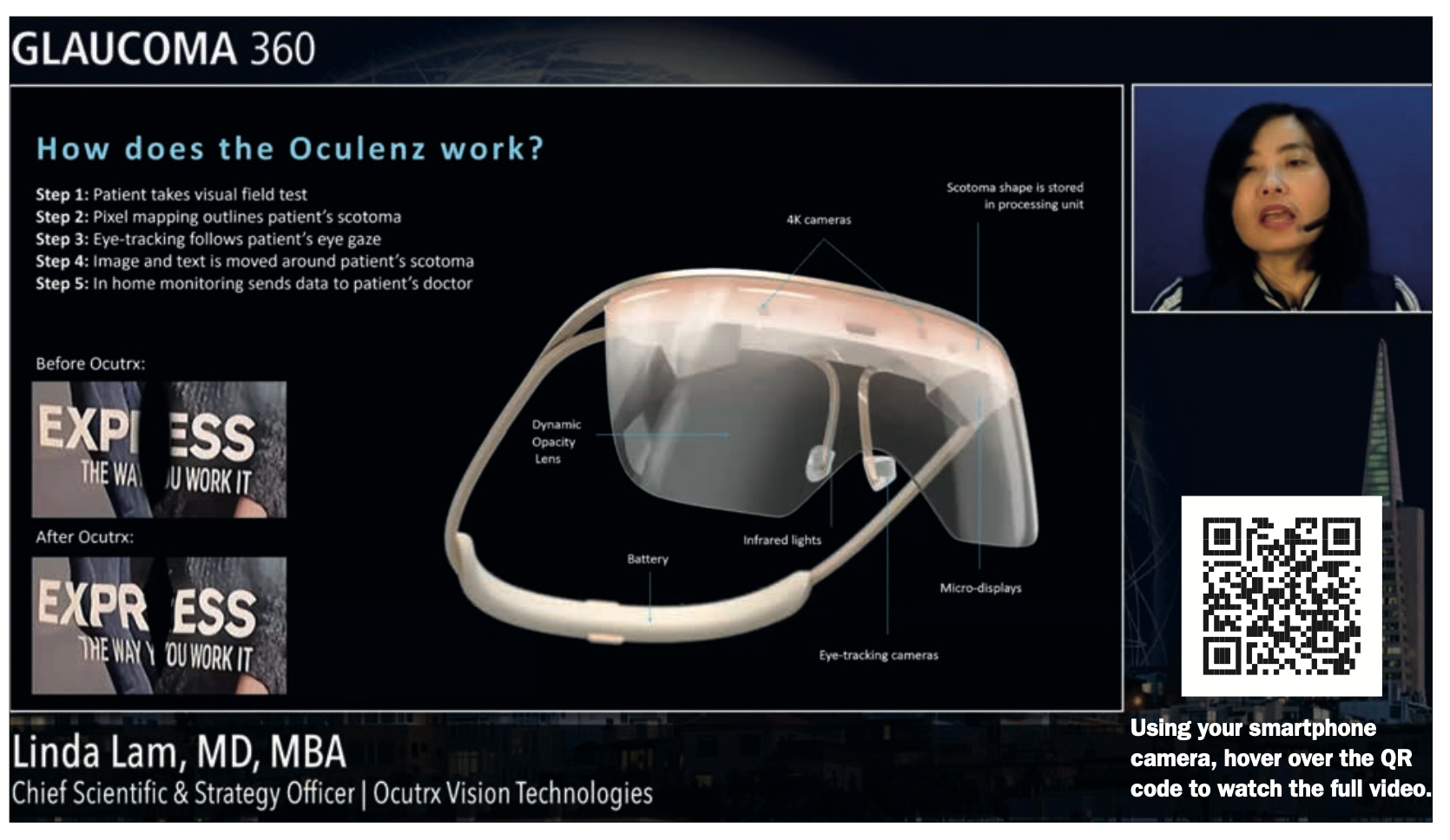
The AI platform goes a step further by augmenting patient vision. In addition to diagnosing visual defects, the visual distortion and double vision can be corrected and the customized VF corrected and expanded based on the patient profile.
“The user’s vision is augmented and enhanced and the surrounding environment enhanced, providing increased safety and functionality to the patient,” Shousha said.
A clinical trial at Bascom Palmer that compared the Heru VF measurements with Humphrey VF showed the 2 are comparable in healthy and diseased eyes with excellent reproducibility.
A Telehealth platform for sight
Elina Ianchulev, MBA, chief business officer at KeepYourSight, described the company’s eye care platform for remote physiologic monitoring and telehealth.
Telehealth provides the opportunity for remote diagnosis and care management of chronic ocular diseases, which is important because 50% of glaucoma and diabetic retinopathy cases are diagnosed late, and in 50% of patients with age- related macular degeneration (AMD), treatment is late, she explained.
The KeepYourSight platform provides clinical applications to remotely assess optic nerve/macula/acuity function and, later in 2021, ocular motility, the ocular surface tear film, and others.
The tests, all of which are software-based, can be self-administered on tablets, personal computers, and smartphones.
In addition to monitoring existing patients, this platform offers clinicians the opportunity to expand their practices through screening in the community and among friends and family and referring channels, Ianchulev said.
Augmented reality technology
Ocutrx Vision Technologies is dedicated to providing augmented vision to
patients with AMD and low vision.
The Oculenz augmented reality technology uses pixel manipulation to allow ophthalmic patients to see around their scotoma, according to Linda Lam, MD, MBA, chief scientific and strategy officer.
The technology works by first mapping the scotoma during a VF test. Eye-tracking follows the patient’s gaze as the image and text are moving around the scotoma.
Data transmission to the clinician and telemedicine are also possible with this device, which facilitates following scotoma enlargement and possible disease progression and
earlier intervention.
In addition to remote care, Ocutrx developed the OR-Bot, which is useful in the operating room to address challenges with ergonomics, space constraints imposed by current surgical systems and digital cameras, and poor resolution and 3D glasses limitations.
The instrument offers a virtual reality microscope, 3D monitor, and augmented reality headset.
Newsletter
Don’t miss out—get Ophthalmology Times updates on the latest clinical advancements and expert interviews, straight to your inbox.
